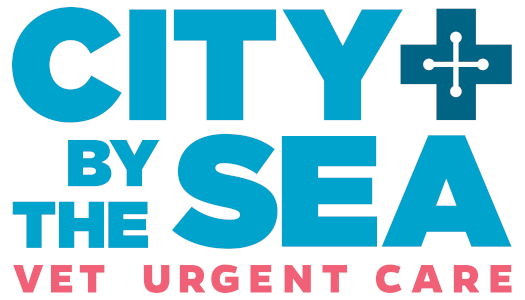All About Dog Dental Care at City By The Sea Veterinary Hospital
We know in humans, there's a relationship between periodontal health and the health of other organs, including the kidneys, liver, heart, and lungs. Now we know the same is true for dogs as well. Dogs are exceedingly prone to periodontal disease, so maintaining good periodontal health helps to control the health of their other organs as well.
What is the most common dental disease in dogs?
The most common dental disease in dogs is periodontal disease. About 85% of all dogs over the age of 3 years develop periodontal disease. Dogs also develop other diseases, such as broken teeth, broken jaws, oral cancers, and occasionally carious decay or other forms of decay. There are several kinds of dental diseases we can encounter in dogs, but periodontal disease is by far the most common.
Why do dogs develop periodontal disease?
Periodontal disease, the most common dental disease, is a function of a lack of oral hygiene. As humans, we brush our teeth twice a day and floss twice a day. We go to the dentist twice a year and still develop periodontal disease. Most dogs don't receive that kind of oral hygiene at home, making them more prone to periodontal disease, which often goes unrecognized for a long time.
What are the signs of periodontal disease?
The most common sign of periodontal disease is bad breath, noticeable before any visible symptoms. Calculus or tartar buildup, especially at the gum line, and red gums are probably the most common things that an owner, client, or veterinarian may look for. By the time dogs develop bad breath, they usually have advanced periodontal disease. The more the bad breath, the more periodontal disease they have. Other things to note would be worn teeth, broken teeth, swelling of the gums or tissue around the mouth, and swollen lymph nodes around the neck.
Why do dogs lose teeth?
There are a few reasons for dogs to lose teeth, but the most common is advanced periodontal disease, where the gum and bone separate from the roots of the teeth. If enough bone separates from the roots, there's not enough support for the teeth, leading them to spontaneously fall out. Another reason for losing teeth is if they break. Sometimes dogs run into hard objects or chew on hard objects, breaking their teeth. The tooth can break off, often leaving the root under the gum line or exposed through the gum line.
What kind of dental care is available for dogs?
Much dental care can be provided by your general practitioner or primary care provider. There are also veterinary dental specialists who specialize in veterinary dentistry, providing higher levels of care or levels of care not often available through primary care veterinarians.
Can dog teeth fall out?
Dog teeth can fall out. As mentioned before, periodontal disease is the most common reason, but they can also break teeth, which is another reason.
Do smaller dogs have more dental issues?
That's a really good question because the littler the dog, the more overrepresented they will be with gum disease or periodontal disease. Bigger dogs tend to have more broken teeth from trauma or from chewing on harder toys.
What can I do to prevent dog dental disease?
There are a few things to prevent dental disease. One is brushing your dog's teeth every day, which is hugely effective at minimizing plaque and tartar accumulation. Brushing every other day is slightly effective, while less frequent brushing is probably not effective at all. If brushing doesn't prevent plaque and tartar, especially at the gum line, or if you start to notice red gums or bad breath, it's probably time to consider a professional cleaning under general anesthesia. The cost can vary depending on whether you're seeing a primary care veterinarian or a specialist. In a primary care veterinary hospital, a cleaning may start at about $1,000. If a dog has very bad periodontal disease, treatment might cost $3,000 or $4,000.
You can also visit the veterinary oral health council's website at www.vohc.org, which lists products shown to decrease plaque and tartar accumulation. The three things I recommend are: brushing your dog's teeth daily, using products recommended by the veterinary oral health council, and avoiding certain things known to break teeth. I usually recommend no butcher bones, nylon bones, deer antlers, cow hooves, or bully sticks, as these are often harder than the dog's teeth and can break them.
How often should I brush my dog's teeth?
Dogs' teeth should be brushed about once a day, which has been shown to have the maximum effect at decreasing or minimizing plaque and tartar accumulation. You can use a human toothbrush; I recommend a soft-bristle toothbrush to avoid damaging the enamel. Avoid human toothpaste as it contains detergents, which dogs may swallow and upset their stomach. Stick to a veterinary dental toothpaste, often flavored so dogs like it and don't have detergents that might upset the stomach.
What products do you recommend for dog dental care?
I recommend using products advocated by the VHC, the veterinary oral health council at vc.org, and considering professional cleanings. Depending on the breed of dog and their tendency to develop periodontal disease, cleanings may be as frequent as once a year in small breed dogs or less frequent in dogs less prone to periodontal disease.
What should I look for as signs of dental issues in dogs?
The biggest sign we look for is halitosis or bad breath, indicating that things have progressed. Also, look for plaque and tartar, especially at the gum line, red gums, and any broken teeth.
Why is general anesthesia needed for dental care?
To provide proper dental care, we need general anesthesia for a few reasons. We use it to examine the animal with dental x-rays, probing, and evaluating under the gum line. General anesthesia is also required to provide proper cleaning of the teeth, accessing all surfaces, and getting under the gum line.
What should I expect from a professional dental cleaning for dogs?
Expect a few things. First, we start with a pre-dental evaluation, which usually includes an exam, often blood work, and sometimes x-rays or other tests to determine the pet's health. General anesthesia is required, and we want to ensure your pet is healthy for anesthesia. Once your pet is safely under anesthesia, we'll usually start with a set of dental X-rays to see what's happening under the gum line, looking for decay, broken teeth, and bone loss, which indicate periodontal disease. These issues are addressed while they're under anesthesia. Once addressed and the teeth are cleaned and polished, we may recommend putting a sealant on the teeth. After recovering from anesthesia, they are discharged, often with pain medications for a few days, soft food for a few days, and discussions of home health care, as mentioned before.
At City By The Sea Veterinary Hospital, your pet is our priority. If you have any questions, don't hesitate to call our team at (848) 217-5000, or you can email us at [email protected]. Our staff would love to talk with you!

 Our New Year's Holiday Hours
Our New Year's Holiday Hours 

